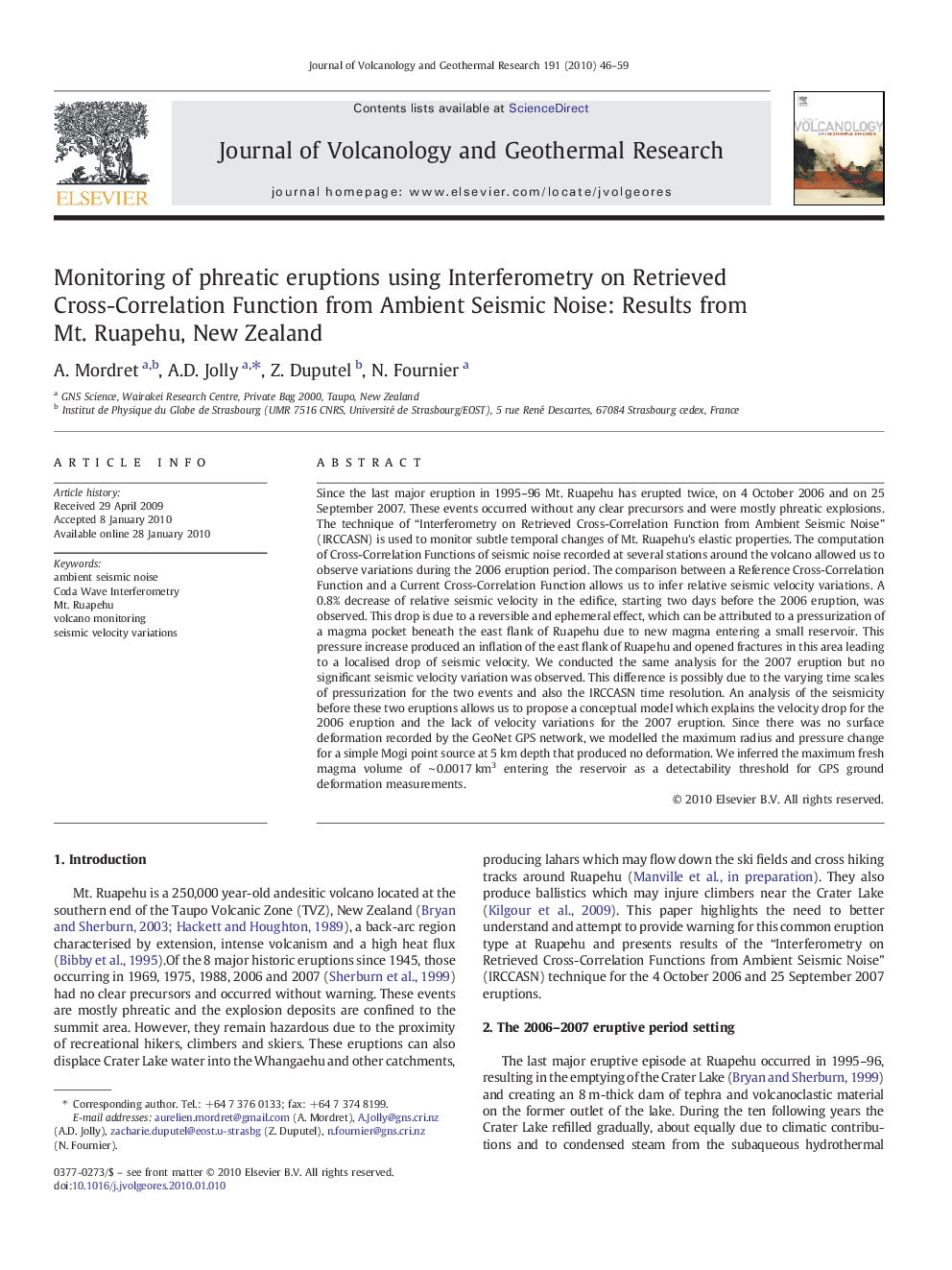| کد مقاله | کد نشریه | سال انتشار | مقاله انگلیسی | نسخه تمام متن |
|---|---|---|---|---|
| 4714128 | 1638423 | 2010 | 14 صفحه PDF | دانلود رایگان |

Since the last major eruption in 1995–96 Mt. Ruapehu has erupted twice, on 4 October 2006 and on 25 September 2007. These events occurred without any clear precursors and were mostly phreatic explosions. The technique of “Interferometry on Retrieved Cross-Correlation Function from Ambient Seismic Noise” (IRCCASN) is used to monitor subtle temporal changes of Mt. Ruapehu's elastic properties. The computation of Cross-Correlation Functions of seismic noise recorded at several stations around the volcano allowed us to observe variations during the 2006 eruption period. The comparison between a Reference Cross-Correlation Function and a Current Cross-Correlation Function allows us to infer relative seismic velocity variations. A 0.8% decrease of relative seismic velocity in the edifice, starting two days before the 2006 eruption, was observed. This drop is due to a reversible and ephemeral effect, which can be attributed to a pressurization of a magma pocket beneath the east flank of Ruapehu due to new magma entering a small reservoir. This pressure increase produced an inflation of the east flank of Ruapehu and opened fractures in this area leading to a localised drop of seismic velocity. We conducted the same analysis for the 2007 eruption but no significant seismic velocity variation was observed. This difference is possibly due to the varying time scales of pressurization for the two events and also the IRCCASN time resolution. An analysis of the seismicity before these two eruptions allows us to propose a conceptual model which explains the velocity drop for the 2006 eruption and the lack of velocity variations for the 2007 eruption. Since there was no surface deformation recorded by the GeoNet GPS network, we modelled the maximum radius and pressure change for a simple Mogi point source at 5 km depth that produced no deformation. We inferred the maximum fresh magma volume of ∼ 0.0017 km3 entering the reservoir as a detectability threshold for GPS ground deformation measurements.
Journal: Journal of Volcanology and Geothermal Research - Volume 191, Issues 1–2, 10 March 2010, Pages 46–59